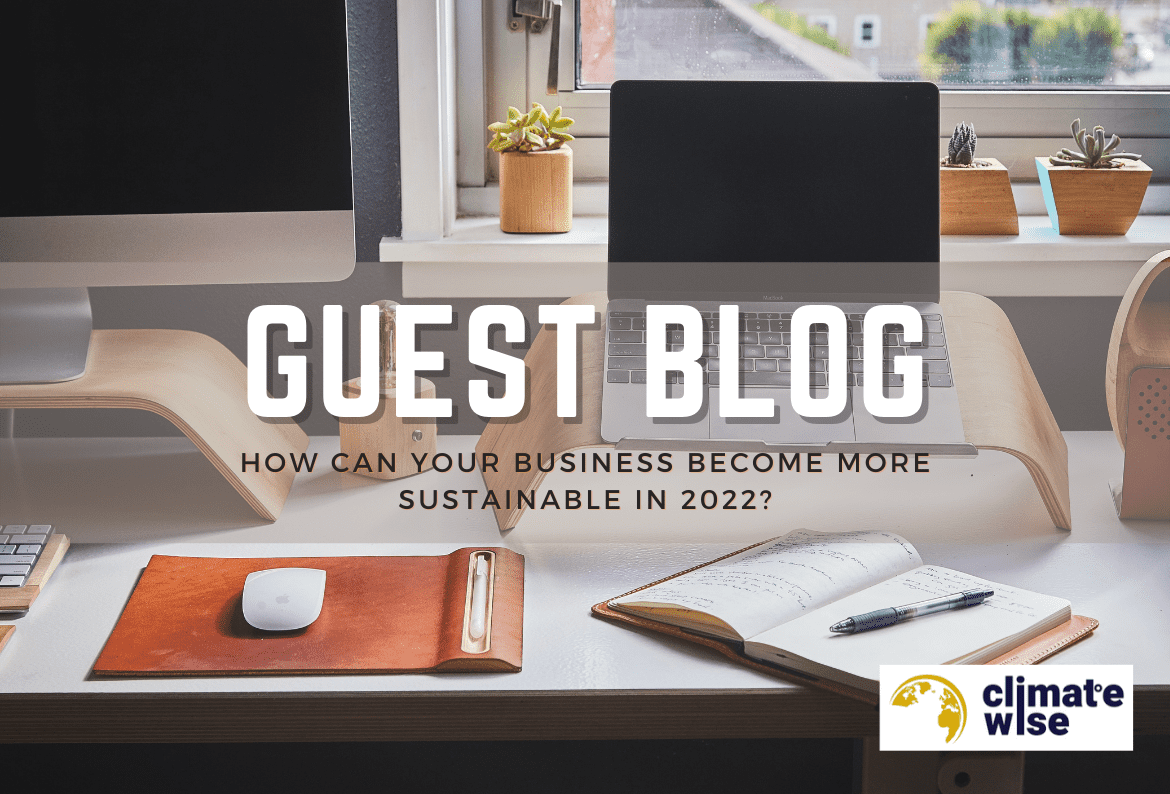How can your business become more sustainable in 2022?
Read time: 3 minutes

How can your business become more sustainable in 2022?
Sustainability is increasingly becoming a key focus for brands and consumers. We are witnessing more and more customers choosing to purchase from brands committed to sustainability, and many of them are actually willing to pay higher prices for products that are sustainably made. There are numerous benefits to ensuring your brand is focusing on sustainability, regardless of your industry. Here are some ways your business can become more sustainable in 2022:
1. Reduce packaging
A reduction in packaging is a key factor that many consumers look out for when choosing a sustainable brand. Look at your packaging and the packaging process carefully. If your products use a lot of single-use plastics or an unnecessary volume of packaging, then it’s time to change. Choose materials that can be easily recycled, such as cardboard, and look at other eco-friendly alternatives. For retail or service businesses, choose products that have actively tried to reduce their packaging. Supporting other sustainable brands will, in turn, support your own sustainability.
2. Recycle and upcycle
Many businesses already recycle basic items such as paper, however, to improve your sustainability, you need to improve your recycling. Consider upcycling items rather than buying something new; many sustainable brands are furnishing their office spaces with upcycled second-hand furniture. Ensure that it is easy for your employees to recycle their items so that it becomes part of your workplace culture. Look at other recycling schemes to see if you can divert more from going to landfill, such as e-waste items. Conduct a waste audit to understand what materials are being thrown away and whether any can be recycled instead.
3. Green energy
All businesses rely on electricity to function, however, your energy supplier doesn’t have to be polluting the planet. Consider switching to a green tariff, this means that all or some of the electricity you purchase is ‘matched’ by purchases of renewable energy that your energy supplier makes on your behalf. The energy purchased could come from a variety of renewable sources including solar power or wind farms. If possible, consider establishing your own renewable energy source, such as Severn Trent Water, who have installed solar panels.
4. Measure your waste
The volume of waste created in a business is often underestimated. Being aware of how much your brand is wasting is a key step to becoming more sustainable. Office supplies, plastic cups, coffee pods, and other common office waste products can soon add up. By measuring your waste, it is easier to take action and set targets to reduce this. You can identify where the main sources of waste are coming from and what changes can be made to reduce it, such as using paper cups and reusable coffee pods.
5. Eco-friendly equipment
Aside from the previously mentioned uses of technology, there are greener ways to equip your office. Fitting automatic switch systems and sensors means that lights can be switched off when a space isn’t being used to save electricity. The same can be applied to heating and thermostats. These steps not only reduce your carbon footprint but also save you money. To further reduce your energy consumption, you can also utilise energy-saving modes, set up sleep modes on your screens, or decrease the brightness. While they appear to be insignificant actions, when implemented on a large scale, they can have a substantial impact.
6. Calculate your carbon footprint
Understanding your emissions is one of the first steps to having a meaningful difference. By calculating the volume of carbon your business is responsible for, you can act accordingly and make significant changes. Calculating your footprint will highlight the key emission contributors and where you can take action. Firebrand Promotions has already calculated its corporate carbon footprint with Climate Wise as part of its journey to net zero.
7. Share your sustainability
As you adopt changes along your journey to being more sustainable, communicate these efforts to your employees, consumers, and investors. Alongside spreading the word and the benefits this will have to your brand’s image, it could help drive others in your industry to make similar changes. Ensure you are transparent and honest when communicating sustainability, if you have not been able to make sustainable changes to an area yet, be clear and explain the reasons behind this.
Becoming sustainable is not a quick process, it involves ongoing changes and constant evaluation. Set your business realistic goals and monitor the progress being made. There will always be more you can do to make an impact. If you want to find out what your business can do, check out Climate Wise: https://climate-wise.com/.


 Back
Back